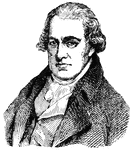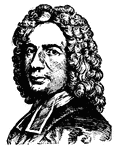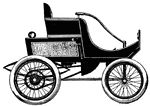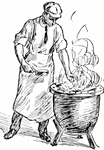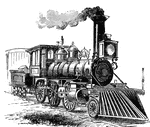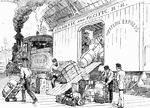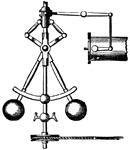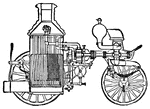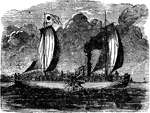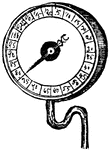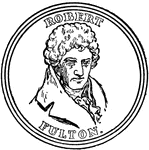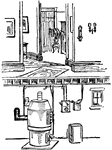
Steam plow
A Steam plow, 1901. The travel of the plows is at right angles to the travel of the engine.

Gunboat collision
"Desperate engagement, april 24th, 1862, between the United States gunboat "Varuna," Commander Boggs,…

Landing at Parkersburg
"Landing of Federal troops at Parkersburg, Western Virginia. Parkersburg, Va., in 1861 was a thriving…

Confederate rams
"Confederate rams from Charleston Harbor attacking the Federal blockading squadron, January 31st, 1863.…

Chaffee Machine
"Calenders heated internally by steam, for spreading India Rubber into sheets or upon cloth, called…
Long Point
Long Point and vicinity. This little sketch was taken from the steam-boat , near the south end of Long…
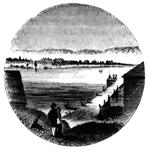
Chimney Point
Chimney Point Landing. This view is taken from the green in front of the inn at Chimney Point, looking…

Arnold's Battle
Scene of Arnold's naval battle. This sketch was made from the pilot's room of the steam-boat just after…

Isle Aux Noix
Isle Aux Noix, in the Sorel. The sketch was made from the pilot's room of the steam-boat, about half…
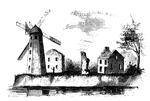
Wind-Mill Point
Wind-mill Point. This view was sketched from the steam-boat, when a little below the wind-mill, looking…
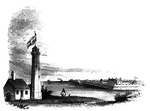
Fort Niagra
Distant view of Fort Niagra. This view is from the west side of the Niagra River, near the light-house.…
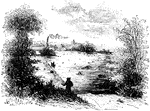
Cherokee Ford
"View at the Cherokee Ford. This view is from the east bank of the river. Toward the extreme right is…

Aeolipile
"An instrument illustrating the expansive force of steam generated in a closed vessel, and escaping…
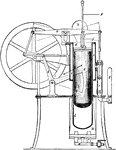
Air-engine
"A motor employing the elastic force of air expanded by heat, or air compressed by means of another…
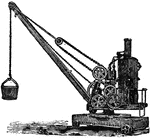
Steam Crane
"A Crane is a machine for lifting weights, worked either by hand or by steam, or by hydraulic power.…

Steam Fire Engine
"A Fire Engine is a machine employed for throwing a jet of water for the purpose of extinguishing fires.…

Pelton Wheel Turbine
"Turbine is, in mechanics, a term formerly confined to horizontal water wheels, the revolution of which…

Log and Reel
"Log is an apparatus for ascertaining the rate of a ship's motion. In a steam engine, a tabulated summary…
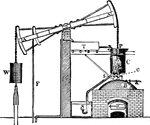
Steam Engine
"Newcomen's Atmospheric Steam-Engine. A, A, working-beam; B, boiler from which steam is admitted through…
American Locomotive
"Three locomotives were imported from England in 1829, and the first trial in America took place Aug.…

Early Locomotive
"Three locomotives were imported from England in 1829, and the first trial in America took place Aug.…

Steamboat of 1736
"A steamboat is a boat or vessel propelled by steam acting either on paddles or on a screw. The term…
American River Steamboat
"A steamboat is a boat or vessel propelled by steam acting either on paddles or on a screw. The term…

Modern Sound Propeller
"A steamboat is a boat or vessel propelled by steam acting either on paddles or on a screw. The term…

Modern Ocean Steamship
"A steamboat is a boat or vessel propelled by steam acting either on paddles or on a screw. The term…
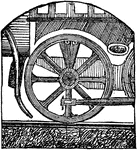
Driving-wheel
A wheel that communicates motion; the wheel of a locomotive, which, adhering to the track, communicates…
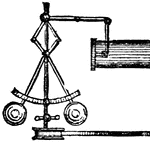
Governor
A contrivance connected with mills, steam-engines, or other machinery, for maintaining uniform velocity…
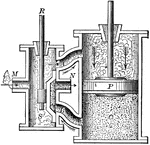
Steam engine
"The steam engine is a powerful device for utilizing the energy involved in the elasticity and expansive…

Stuffing-box
"A small enclosure, to prevent the escape of steam, etc., at a joint in machinery. — Williams,…
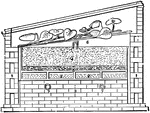
Pipe-heated hotbed
"Hotbeds may be heated by means of either steam or hot water. They can be piped from the heater in a…
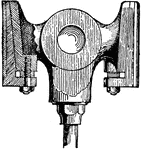
Crosshead
A beam or rod stretching across the top of something; specifically, the bar at the end of a piston rod…

Steamboat
A vessel propelled by the agency of steam, which agent acts either on a screw or on paddles. Inventors…

Steam Engine
A machine for utilizing the elastic force of steam as a motive power, and now constructed in a variety…
Heated Pumice
This illustration shows a mixture of gases passing over a headed pumice to forming steam.

Fowler's Steam-engine
"In 1854, Mr. Fowler exhibited his patent steam-draining apparatus at the Lincoln meeting of the Royal…

Fowler's Anchor
"A massive square framework of wood, mounted on six sarp disc wheels, each about two feet in diameter,…

Fowler's Plough
"A framework of iron, balanced upon two large wheels. To each side of this framework there are attached…
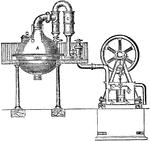
Vacuum-pan
"The vacuum-pan is in universal use in all European sugar-refineries, and in all well-provided sugar-plantations.…
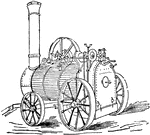
Portable Steam-Engine
A portable, external, combustion heat engine that converts steam in to mechanical work.
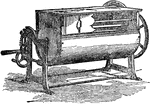
Kneading Machine
"A form of dough-making machine in common use. It consists of a trough or box, the lower portion of…
